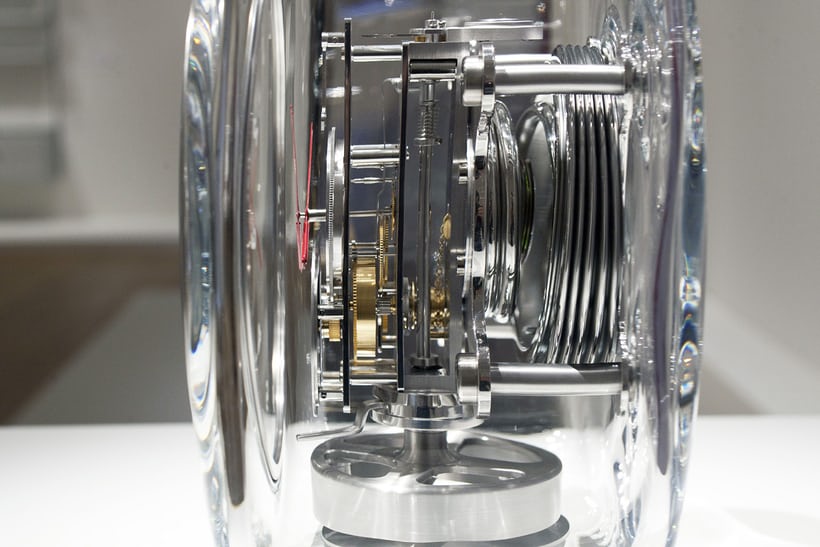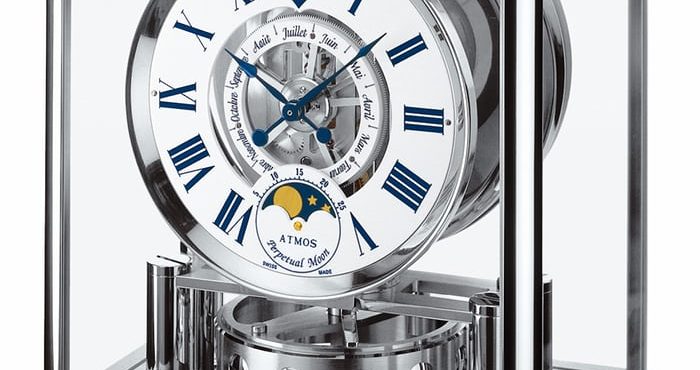Imagine a device you use every day, whether that’s a remote control, an electric toothbrush, or your smartphone.
Now imagine you never had to change or charge up the batteries. How freeing would that be?
Our toothbrushes would never fizzle out, our smartphones would never hit 0%, and that beeping from the smoke detector would stop forever.

In the watch world, we think of watches without batteries simply as automatics. They wind by movement from your wrist and arm throughout the day. The Atmos clock, however, doesn’t need movement from a human and surely doesn’t require a battery.
Additionally, is not powered by a suspended weight, like a pendulum clock.
The Atmos, produced by Jaeger-LeCoultre with a history dating back to 1928, is run by temperature and atmospheric pressure changes in the environment.

In fact, a single change in degree (between 59 and 86 Fahrenheit) or pressure variation of 3 mmHg can power the clock for two days. The clock’s balance swings just twice per minute, conserving energy.
And because the entire machine runs on little energy, everything must work free of friction.
Clocks running on atmospheric pressure changes isn’t a new idea — in fact, that technology dates back to the 17th century.

The clock works by having an ethylene chloride gas-filled capsule in its interior. When the temperature rises or falls, the capsule expands or contracts.
The capsule’s wall is connected to a chain, which moves in a back-and-forth motion, winding the mainspring.
This clock, despite being an engineering marvel with quite its own history, can be found affordably. However, more expensive and elaborate models can run north of $200,000.

